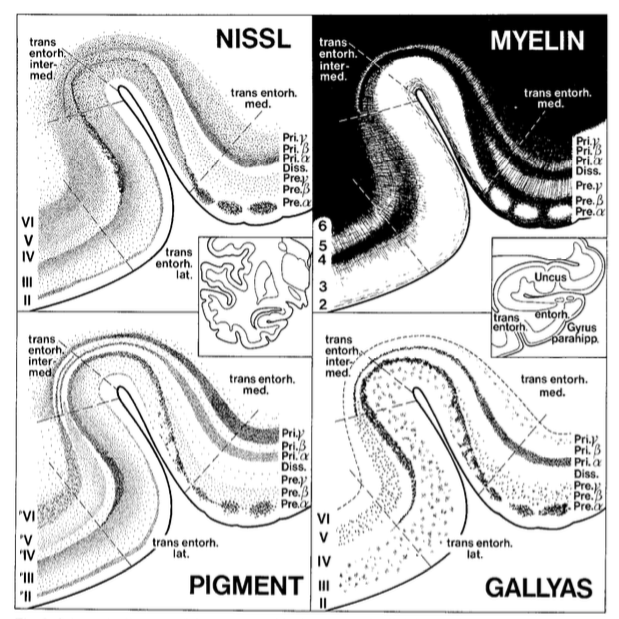
Today we continue our thread series discussing anatomical variability in the medial temporal lobe (MTL). Today’s topic is anatomical variability in the hippocampal head with a focus on the hippocampal digitations. 🍤🤓📢
#SubfieldWednesday (1/n)
#SubfieldWednesday (1/n)
But first, what do we mean by the hippocampal head? We are talking about the anterior part of the hippocampus that contains or is adjacent to the uncus.
#SubfieldWednesday (2/n)
#SubfieldWednesday (2/n)

Now what about those “hippocampal digitations” ?
Ding & Van Hoesen (2015) describe external and internal digitations. The external digitations are the “bumps” that extend dorsally and the interior digitations are the “bumps” that extend ventrally.
#SubfieldWednesday (3/n)

Ding & Van Hoesen (2015) describe external and internal digitations. The external digitations are the “bumps” that extend dorsally and the interior digitations are the “bumps” that extend ventrally.
#SubfieldWednesday (3/n)


According to Ding & Van Hoesen (2015), most hippocampi have 3 digitations, but some people have 2 or 4 (or more).
#SubfieldWednesday (4/n)
#SubfieldWednesday (4/n)
Q: Which subfields are contained in the digitations?
A: CA1 and subicular regions.
See figure below to see two examples of hippocampal subfields overlaid onto hippocampi with variable numbers of digitations.
#SubfieldWednesday (5/n)
A: CA1 and subicular regions.
See figure below to see two examples of hippocampal subfields overlaid onto hippocampi with variable numbers of digitations.
#SubfieldWednesday (5/n)

Quick aside: It is important to remember that hippocampal digitations are different from “dentations” recently describes by Beattie et al, Neuropsychol, 2017.
doi.org/10.1016/j.neur…
We will have a different thread on those!
#SubfieldWednesday (6/n)
doi.org/10.1016/j.neur…
We will have a different thread on those!
#SubfieldWednesday (6/n)
Now for the audience participation part! Have you come across any brains that have 4 or more hippocampal digitations? If so, comment below and post a screenshot!
#SubfieldWednesday (end)
#SubfieldWednesday (end)
• • •
Missing some Tweet in this thread? You can try to
force a refresh













